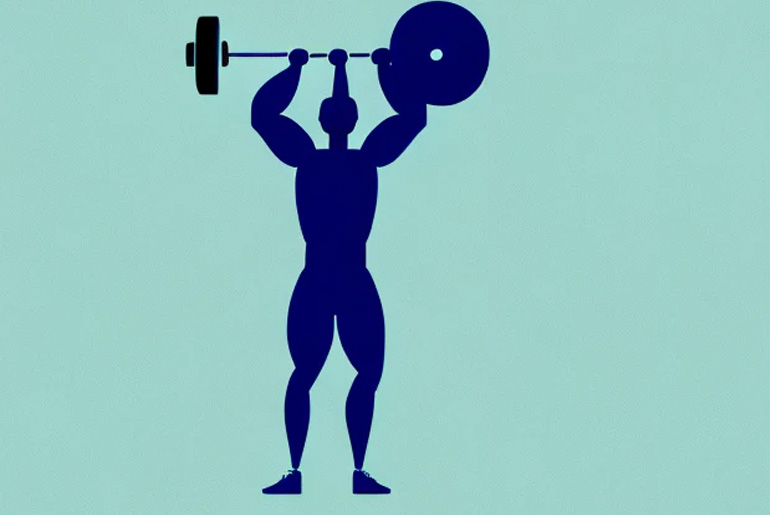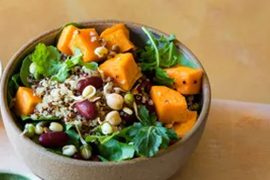Most people concentrate on building muscular mass when it comes to fitness. Building muscle requires the proper balance of training, diet, and recuperation, regardless of your goals: increasing your strength, improving your general health, or improving your appearance. Are you curious about how to build muscle? Although you might think that this calls for you to stick to a demanding gym routine, this may not be the case. Simple suggestions like eating a nutritious yet high-calorie diet, exercising frequently, and getting enough sleep can have a big impact. Gaining strength and muscle mass is important for metabolic health, functional strength, and injury prevention.
Muscle mass:
The overall weight of your body’s muscles, including its skeletal, smooth, and cardiac muscles, is referred to as muscle mass. Movement, strength, and stability are all attributed to skeletal muscles, which are the ones we work out in the gym. Muscle mass and strength have a linear relationship, therefore gaining strength and muscle mass is important for metabolic health, functional strength, and injury prevention. This implies that people who have greater muscle are typically stronger. As a result, it’s critical to comprehend how to increase muscle mass as well as the appropriate diet and workout regimen.
Why does muscle mass matter?
Let’s examine how this makes us stronger before learning how to build muscle.
- Boosts metabolism and burns more calories: Since muscle is a metabolically active tissue, even when you’re at rest, your body will burn more calories if you have more muscle. This facilitates the maintenance of a trim body and the management of body fat.
- Enhances performance and strength: Gaining muscle increases endurance and strength, which facilitates daily activities and exercise. Better movement is supported by stronger muscles, whether you’re lifting heavy weights or just carrying groceries.
- Protects joints and lowers injury risk: Your joints are better supported by stronger muscles, which lessens stress and lowers the chance of damage. This is particularly crucial as we become older.
- Enhances blood sugar regulation and insulin sensitivity: Muscle mass is crucial for glucose metabolism. Your body can better control blood sugar if you have greater muscle, which lowers your risk of type 2 diabetes.
- Stops the loss of muscle with age: We normally lose muscle as we age (sarcopenia). This process can be slowed down with strength training and a healthy diet, keeping you active and flexible for many years to come.
Ways to Increase Muscle Mass
Here are some easy steps you may do if you’re wondering how to put on muscle:
1. Make protein consumption a priority
The building block of muscle is protein. The expert advises aiming for 1.6–2.2g of protein per kilogram of body weight every day if you’re serious about learning how to build muscle. To maximize muscle building, divide your protein intake over four to five meals each day.
Among the top resources are:
- Lean meats (beef, fish, and chicken)
- Dairy products (cottage cheese, Greek yoghurt) and eggs
- Plant-based choices, such as chickpeas, tofu, and lentils
- Supplemental protein (plant-based or whey)
2. Adhere to a strength training regimen that is gradual
Understanding how to gradually stress your muscles is the first step towards gaining muscular mass. The resistance must be increased progressively over time in order to do this.
Important muscle-building exercises:
- Squats: Increase strength in the lower body
- Deadlifts: Work several different muscle groups
- Bench press: Develops triceps and chest strength
- Pull-ups: Build your biceps and back
Plan of training:
- Work out three to five times a week, concentrating on complex motions.
- Do 6–12 repetitions per set with a weight that presents a difficulty.
- For steady improvement, up the weight or repetitions every several weeks.
3. Consume an excess of calories
Are you wondering how to eat the correct foods to develop muscle mass? What you can do is this. Your body must consume more calories than it expends in order to grow muscle. However, this does not imply consuming junk food. The following advice can help you consume more calories.
- Add more complex carbohydrates (sweet potatoes, quinoa, and oats) and healthy fats (olive oil, avocados, and nuts).
- Drink plenty of water. Try to drink three to four liters of water per day.
- To make sure you’re getting enough calories and nutrients for muscle building, keep track of everything you eat.
4. Give rest and sleep top priority
Getting enough sleep is another crucial step in learning how to build muscle. Indeed, muscle growth occurs during rest and recuperation, not in the gym. According to a study that was published in the Journal of Musculoskeletal and Neuronal Interactions, muscle strength and sleep quality are positively correlated. Compared to those who slept for seven to eight hours and more than eight hours, participants who slept for less than six hours had weaker muscles. Your body releases growth hormones while you sleep deeply, and these hormones are essential for muscle restoration. Try to get between seven and nine hours each night. On rest days, include active healing activities like foam rolling, stretching, and mobility drills to avoid injuries and stiffness, the expert advises.
5. Take into account supplements
Supplements can be helpful, but the best food is always genuine food. But you should only have these after speaking with a doctor.
- Whey protein: This is a simple method to reach your daily protein targets.
- Creatine monohydrate: This enhances muscle function and strength.
- Omega-3s: They promote muscle repair and lower inflammation.
But according to the expert, one crucial piece of advice for learning how to increase strength and muscle mass is to stick to evidence-based supplements and stay away from pointless gimmicks.
Therefore, lifting large weights isn’t the only approach to build muscle. The three main components of learning how to build muscle are recovery, healthy eating, and consistency. Keep tabs on your progress, exercise patience, and most of all, have fun. The outcomes will be seen.
Disclaimer:
The information contained in this article is for educational and informational purposes only and is not intended as a health advice. We would ask you to consult a qualified professional or medical expert to gain additional knowledge before you choose to consume any product or perform any exercise.






